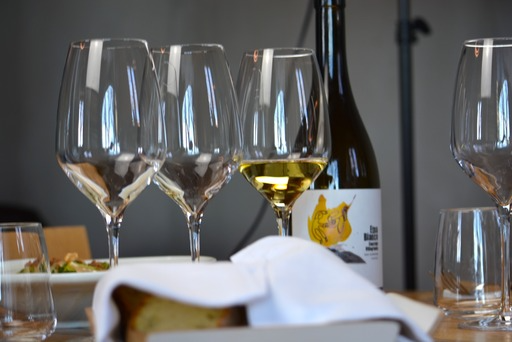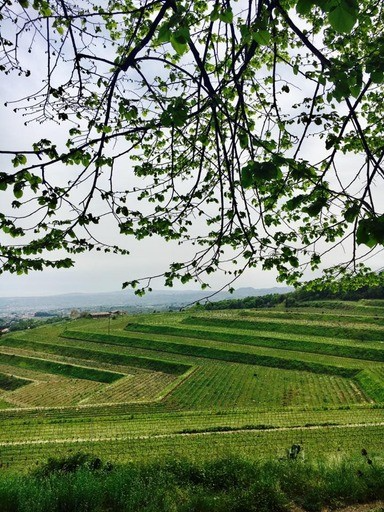╔
L’Etna: un vulcano di vini in continua evoluzione
“Quello che era una volta l’Etna non lo è oggi e quello di oggi non sarà l’Etna domani”, con queste parole, prese in prestito da un produttore etneo, si comprende già la natura versatile e dinamica del vulcano attivo più alto d’Europa.
Conosciuto anche con il nome Mongibello, è un mosaico di realtà differenti nate dalle diverse eruzioni che si sono susseguite negli anni e che hanno contribuito a disegnare un territorio in continuo mutamento. La Muntagna o Idda, come la chiamano bonariamente i siciliani, oggi patrimonio naturale dell’Unesco, con i suoi 3.357 m sovrasta la costa orientale della Sicilia e si contraddistingue per la produzione di vini dal grande potenziale di invecchiamento, buona longevità e una sapidità e freschezza che li rendono di facile beva. Sui fianchi della Montagna, dalla forma a C rovesciata, si sviluppa una viticoltura eroica, qui si produce ad altitudini comprese tra i 300 e i 1000 m s.l.m., contraddistinta da un duello costante “uomo-natura” che accompagna nell’immaginario collettivo questi vini.
La dicotomica visione di questo Vulcano, spesso imprigionato tra luci e ombre, tra la generosità della sua terra e il passo inarrestabile dei suoi fiumi di lava, tra rinascita e distruzione, in un equilibrio cullato dal tempo la cui origine si perde nella memoria contribuisce a regalare questa visione romantica che si lega indissolubilmente a questo territorio, ai vini e a coloro che li producono. Oggi l’Etna registra una continua e costante crescita sui mercati, soprattutto per i bianchi e per gli spumanti rispetto a tante altre zone dove si è riscontrata una lenta e continua contrazione dei consumi. I diversi Versanti, caratterizzati dalle differenti condizioni pedoclimatiche e dai terroir unici che si ritrovano nei vari lati del vulcano danno vita a grandi vini. L’Etna è la patria di Profondi Rossi ed Estremi Bianchi ma anche di Spumanti e Vini Rosati che declinano in maniera autentica.
“What Etna once was is not Etna today, and what Etna is today will not be Etna tomorrow,” with these words, borrowed from an Etna winemaker, one already understands the versatile and dynamic nature of Europe’s highest active volcano.
Also known by the name Mongibello, it is a mosaic of different realities born of the various eruptions that have occurred over the years and that have contributed to designing an ever-changing territory. The Muntagna or Idda, as the Sicilians good-naturedly call it, now a Unesco natural heritage site, with its 3,357 m (10,000 feet) towers over the eastern coast of Sicily and is distinguished by the production of wines with great aging potential, good longevity and a savoriness and freshness that make them easy to drink. On the sides of the Mountain, with its inverted C shape, a heroic viticulture is developed, here producing at altitudes between 300 and 1000 m above sea level, marked by a constant “man-nature” duel that accompanies these wines in the collective imagination.
The dichotomous vision of this Volcano, often imprisoned between light and shadow, between the generosity of its land and the unstoppable pace of its rivers of lava, between rebirth and destruction, in a balance cradled by time whose origin is lost in memory contributes to giving this romantic vision that is inextricably linked to this territory, to the wines and to those who produce them. Today, Etna is experiencing continuous and steady growth in the markets, especially for whites and sparkling wines compared to many other areas where there has been a slow and continuous decline in consumption. The different Versants, characterized by the different soil and climate conditions and unique terroirs found on the various sides of the volcano give rise to great wines. Etna is home to Deep Reds and Extreme Whites but also to Sparkling and Rosé Wines that decline in authentic ways.
L’Etna registra una continua e costante crescita sui mercati, soprattutto per i bianchi e per gli spumanti. (Cortesia di Barone di Villagrande, Catania; www.villagrande.it/).
Etna records continuous and constant growth on the markets, especially for whites and sparkling wines. (Courtesy of Barone di Villagrande, Catania; www.villagrande.it/).

I Grandi Rossi dell’Etna, beneficiano soprattutto nel versante nord di forti escursioni termiche, che regalano a questi vigneti notti fredde, contribuiscono a mantenere l’acidità delle uve e una lenta maturazione regalando a questi vini un profilo aromatico ricco, intenso dove alle note dei frutti rossi si alternano spezie, erbe aromatiche e sentori balsamici. Sono vini di struttura dalla lunga persistenza che regalano alla beva un tannino deciso ma mai insistente. Il loro colore varia dalle tonalità del rosso rubino fino ad abbracciare sfumature granate per le vecchie annate. È qui che si trovano i vigneti più antichi e il maggior numero di cantine.
I Bianchi trovano nel Versante Est, nel piccolo centro di Milo, la patria dell’Etna Bianco Superiore, qui la vicinanza col mare e la montagna alle spalle regalano un tocco di sapidità che esalta le note minerali di questi Bianchi. Il Carricante spesso accompagnato dal Catarratto e da altre varietà autoctone a bacca bianca ricorda al naso profumi di frutta bianca, gentili note floreali e una salinità che ne contraddistinguono il ventaglio aromatico. Qui nascono vini dalla grande verticalità.
Da alcuni anni si registra la crescita costante anche di vini rosati dove il Nerello Mascalese incontra piccole porzioni di Nerello Cappuccio. Sono vini dalla buona acidità e freschezza con ventagli aromatici che richiamano frutti a bacca rossa ingentiliti da aromi floreali che ne declinano lo spettro aromatico. Regalano differenti sfumature a seconda del tempo di macerazione sulle bucce e alle zone di produzione.
In questo scenario gli Spumanti Etnei continuano a crescere a dare una buona visione di loro. Il clima, i terroir conferiscono alle uve e ai diversi metodi di produzione la possibilità di portare sui mercati dei prodotti di grande qualità. Il nerello Mascalese, e nell’ultimo periodo anche il Carricante, hanno dato prova di poter regalare sensazioni piacevoli nei calici trasmettendone il carattere intenso e minerale.
The Great Reds of Etna, benefit especially on the northern slope from strong temperature ranges, which give these vineyards cool nights, help to maintain the acidity of the grapes and a slow ripening giving these wines a rich, intense aromatic profile where notes of red fruits alternate with spices, herbs and balsamic hints. They are full-bodied wines with a long persistence that give the drinker firm but never insistent tannins. Their color varies from shades of ruby red to embracing garnet hues for the older vintages. This is where the oldest vineyards and the largest number of wineries are located.
The Whites find in the Eastern Slope, in the small town of Milo, the home of Etna Bianco Superiore, here the proximity to the sea and the mountains behind give a touch of savoriness that enhances the mineral notes of these Whites. Carricante often accompanied by Catarratto and other indigenous white varieties brings to mind on the nose aromas of white fruit, gentle floral notes and a salinity that distinguishes its aromatic range. Wines of great verticality are born here.
For some years there has also been a steady growth of rosé wines where Nerello Mascalese meets small portions of Nerello Cappuccio. These are wines with good acidity and freshness with aromatic fans recalling red berry fruits mellowed by floral aromas that decline the aromatic spectrum. They give different nuances depending on the time of maceration on the skins and the areas of production.
In this scenario, the Etnean sparkling wines continue to grow to give a good view of them. The climate, the terroirs give the grapes and the different production methods the ability to bring great quality products to the markets. Nerello Mascalese, and in the last period also Carricante, have proven to be able to give pleasant sensations in the glasses by transmitting their intense and mineral character.
Lo spettacolare anfiteatro naturale di vigneti a terrazza scolpiti sulla roccia vulcanica nello storico borgo siciliano a 700 metri sul mare, sul versante est dell’Etna, che guarda verso Taormina e il Mar Jonio. (Cortesia di Barone di Villagrande, Catania; www.villagrande.it/).
The spectacular natural amphitheater of terraced vineyards carved into the volcanic rock in the historic Sicilian village of Milo, 700 meters above the sea, on the eastern side of Etna, overlooking Taormina and the Ionian Sea. (Courtesy of Barone di Villagrande, Catania; www.villagrande.it/).

Sicuramente i vini dell’Etna stanno beneficiando anche di un passaggio generazionale che vede sempre più giovani al timone delle cantine. Questo comporta anche una comunicazione diversa con i mercati ma soprattutto con il pubblico di riferimento. Negli ultimi decenni i vini etnei sono cresciuti soprattutto in termini di qualità e di percezione da parte del pubblico, attestandosi come una produzione vinicola che mantiene una forte identità legata alle proprie radici. L’Etna è stata la prima doc siciliana nonché anche una delle prime denominazioni delle più antiche d’Italia nel 1968. Oggi i vigneti etnei ricoprono una superficie di circa 1.184.000 ettari suddivisi in 133 contrade con quasi 5,8 milioni di bottiglie prodotte e circa 162 produttori che imbottigliano l’Etna Doc.
L’Etna di domani non sarà quella di oggi, ma come diceva qualcuno nell’oggi cammina già il domani.
Certainly Etna wines are also benefiting from a generational shift that sees more and more young people at the helm of the wineries. This also entails a different communication with the markets but especially with the target audience. Over the past decades, Etna wines have grown above all in terms of quality and public perception, establishing themselves as a wine production that maintains a strong identity linked to its roots. Etna was the first Sicilian doc as well as also one of the first appellations of the oldest in Italy in 1968. Today, Etna’s vineyards cover an area of about 1184,000 hectares divided into 133 contrade with nearly 5.8 million bottles produced and about 162 producers bottling Etna Doc.
The Etna of tomorrow will not be the Etna of today, but as someone said in today already walks tomorrow.
IMMAGINE INIZIALE | La viticoltura lungo le pendici dell’Etna. (Cortesia di Barone di Villagrande, Catania; www.villagrande.it/).
HEAD IMAGE | Viticulture on the slopes of Etna. (Courtesy of Barone di Villagrande, Catania; www.villagrande.it/).